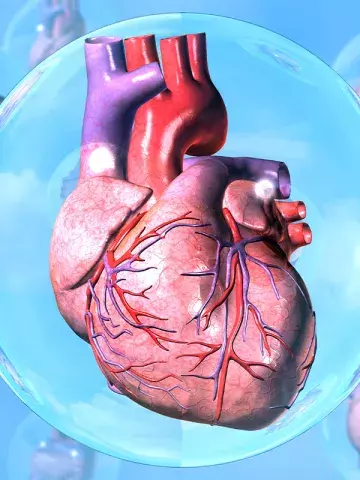Finerenone benefits in patients with heart failure with mildly reduced or preserved ejection fraction
By Rebecca Jenkins
Finerenone significantly lowers the rate of heart failure events and cardiovascular (CV) death in patients with heart failure and mildly reduced or preserved ejection fraction (HFmrEF/HFpEF), a large trial finds.
Steroidal mineralocorticoid receptor antagonists (MRAs) were known to reduce morbidity and mortality among patients with heart failure and reduced ejection fraction (HFrEF), but their efficacy in those with HFmrEF or HFpEF had not yet been established, according to the research presented at the European Society of Cardiology Congress 2024 in London and simultaneously published in The New England Journal of Medicine.
In the Finerenone Trial to Investigate Efficacy and Safety Superior to Placebo in Patients with Heart Failure (FINEARTS-HF), researchers randomly assigned patients with heart failure and a left ventricular ejection fraction of at least 40% to receive the nonsteroidal MRA finerenone (at a maximum dose of 20mg or 40mg once daily) or matching placebo, in addition to usual therapy. The primary outcome was a composite of total worsen ing heart failure events (with an event defined as a first or recurrent unplanned hospitalisation or urgent visit for heart failure) and death from CV causes.
In total, 6001 patients were randomised in the industry- sponsored trial; the mean patient age was 72 years and 46% of the cohort were women.
Over a median follow up of 32 months, there were 1083 primary outcome events in 624 of 3003 patients in the finerenone group, and 1283 primary outcome events in 719 of 2998 patients in the placebo group, a statistically significant reduction in the treatment group. The results for the primary outcome were consistent across all prespecified subgroups, including those defined according to baseline left ventricular ejection fraction (<60% or ≥60%) and baseline sodium-glucose cotransporter-2 (SGLT-2) inhibitor use, the researchers reported.
The total number of worsen ing heart failure events was 842 in the finerenone group and 1024 in the placebo group, while the percentage of patients who died from CV causes was 8.1% and 8.7%, respectively.
Serious adverse events were similar between the groups,
but there was an increase of investigator-reported hyperkalaemia in the finerenone group compared with the placebo arm (9.7% vs 4.2%, respectively) and a reduced risk of hypokalaemia (4.4% vs 9.7%, respectively).
Associate Professor Jo-Dee Lattimore, Director of Heart Failure Services at the Royal Prince Alfred Hospital in Sydney, said FINEARTS-HF was an important study, with the results meaning MRAs had finally ‘made it across the line’ in HFpEF.
Professor Lattimore noted a previous flawed study using the steroidal MRA spironolactone in patients with HFpEF had not achieved its primary outcome; however, a subanalysis had suggested reduced hospitalisations in the north American patient subgroup.
‘FINEARTS-HF achieved its primary outcome but the result was driven by hospitalisations,’ Professor Lattimore told Medicine Today.
‘The only other option available for HFpEF are SGLT-2 inhibitors, but they also only have a hospitalisation outcome. There is still no agent with a mortality benefit in HFpEF. However, hospitalisations remain important in HFpEF as it is a large population of patients.’
She said the hyperkalaemia outcome was expected and was seen also with spironolactone, but it would be important to be vigilant of this effect in the HFpEF population.
It was also worth noting that finerenone was not associated with a risk of gynaecomastia, which was seen with spironolactone, she said.
The final question would be whether the Pharmaceutical Benefits Advisory Committee would allow finerenone prescribing as per FINEARTS-HF, or recommend the much cheaper spironolactone, Professor Lattimore said.
‘I expect though the SGLT-2 inhibitor precedent will get finerenone across the line for prescribing with a benefit driven by hospitalisations,’ she said.


